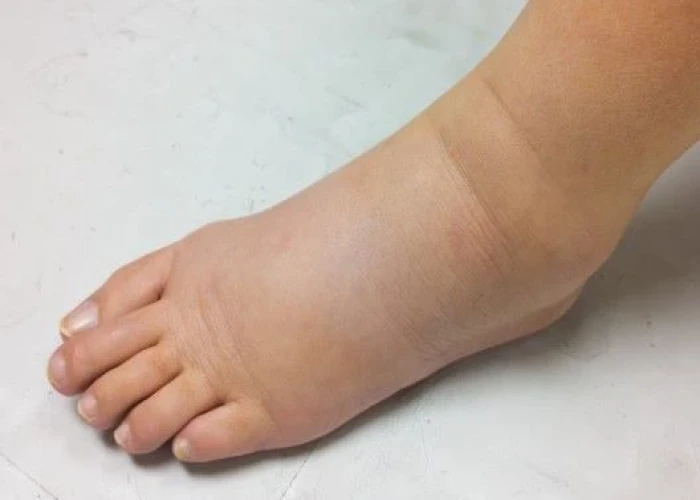 Welcome
Welcome
“May all be happy, may all be healed, may all be at peace and may no one ever suffer."
Bee sting

A bee sting occurs when a bee uses its stinger to inject venom into the skin. Symptoms of a bee sting may include pain, redness, swelling, and itching at the site of the sting. In some cases, individuals may experience a severe allergic reaction, known as anaphylaxis, which can cause difficulty breathing, swelling of the throat, and a drop in blood pressure. If a person experiences symptoms of anaphylaxis, they should seek emergency medical attention immediately. For mild or moderate bee stings, treatment may include removing the stinger, washing the area with soap and water, applying a cold compress to reduce swelling, and taking over-the-counter pain relief medication, such as acetaminophen or ibuprofen.
Research Papers
Disease Signs and Symptoms
- Redness or changes in skin color
- Body pain
- Swollen skin
- Slight swelling around the sting area
- Temporary pain and discomfort or a severe allergic reaction.
- A red welt at the sting area
- Bee sting
Disease Causes
Bee sting
To sting, a bee jabs a barbed stinger into the skin. Bee sting venom contains proteins that affect skin cells and the immune system, causing pain and swelling around the sting area. In people with a bee sting allergy, bee venom can trigger a more-serious immune system reaction.
Disease Prevents
Bee sting
The following tips can help reduce your risk of getting stung by bees:
- Take care when drinking sweet beverages outside. Wide, open cups may be your best option because you can see if a bee is in them. Inspect cans and straws before drinking from them.
- Tightly cover food containers and trash cans.
- Clear away garbage, fallen fruit, and dog or other animal feces (flies can attract wasps).
- Wear closed-toe shoes when walking outside.
- Don't wear bright colors or floral prints, which can attract bees.
- Don't wear loose clothing, which can trap bees between the cloth and your skin.
- When driving, keep your windows rolled up.
- Be careful when mowing the lawn or trimming vegetation, activities that might arouse insects in a beehive or wasp nest.
- Have hives and nests near your home removed by a professional.
Know what to do when you're exposed to bees:
- If a few bees are flying around you, stay calm and slowly walk away from the area. Swatting at an insect may cause it to sting.
- If a bee or wasp stings you, or many insects start to fly around, cover your mouth and nose and quickly leave the area. When a bee stings, it releases a chemical that attracts other bees. If you can, get into a building or closed vehicle.
Disease Treatments
For ordinary bee stings that do not cause an allergic reaction, home treatment is enough. Multiple stings or an allergic reaction, on the other hand, can be a medical emergency that requires immediate treatment.
Emergency treatment for allergic reactions
During an anaphylactic attack, an emergency medical team may perform cardiopulmonary resuscitation (CPR) if you stop breathing or your heart stops beating. You may be given medications including:
- Epinephrine (adrenaline) to reduce your body's allergic response
- Oxygen, to help you breathe
- Intravenous (IV) antihistamines and cortisone to reduce inflammation of your air passages and improve breathing
- A beta agonist (such as albuterol) to relieve breathing symptoms
Epinephrine autoinjector
If you're allergic to bee stings, your doctor is likely to prescribe an emergency epinephrine autoinjector (EpiPen, Auvi-Q, others). You'll need to have it with you at all times. An autoinjector is a combined syringe and concealed needle that injects a single dose of medication when pressed against your thigh. Always be sure to replace epinephrine by its expiration date.
Be sure you know how to use the autoinjector. Also, make sure the people closest to you know how to administer the drug — if they're with you in an anaphylactic emergency, they could save your life. Medical personnel called in to respond to a severe anaphylactic reaction also may give you an epinephrine injection or another medication.
Consider wearing an alert bracelet that identifies your allergy to bee or other insect stings.
Allergy shots
Bee and other insect stings are a common cause of anaphylaxis. If you've had a serious reaction to a bee sting or multiple stings, your doctor likely will refer you to an allergist for allergy testing and consideration of allergy shots (immunotherapy). These shots, generally given regularly for a few years, can reduce or eliminate your allergic response to bee venom.
Disease Diagnoses
Disease Allopathic Generics
Disease Ayurvedic Generics
Disease Homeopathic Generics
Disease yoga
Bee sting and Learn More about Diseases

Lymphedema

Soft tissue sarcoma

Allergies

Throat cancer

Cleft lip and cleft palate

Myocardial ischemia

Pancreatic cysts

Infant reflux
Bee sting, Bee bite treatment, মৌমাছির হুল
To be happy, beautiful, healthy, wealthy, hale and long-lived stay with DM3S.
